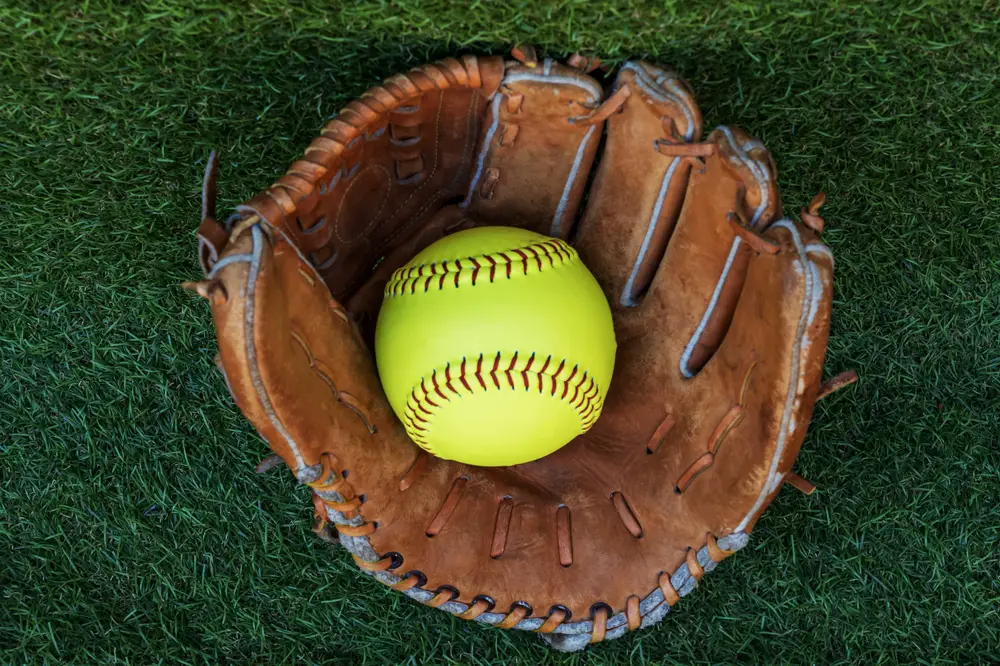Softball is a dynamic sport practiced in many countries around the world. The sport emerged as a variation of baseball, with its own rules and characteristics.
With fast-paced games and more than engaging strategies, softball is practiced both recreationally and competitively, in schools, universities and leagues. And for those who want to venture into this sport, understanding its rules is essential!
With that in mind, we’ve created a special article on the rules of softball for you to get to know! With this understanding, the players’ experience is enhanced, as well as that of the spectators who follow the games.
The rules of softball define how the game should take place, determining the responsibilities of players and officials, and ensuring that matches are fair and exciting.
So let’s find out what the rules of softball are!
Open your Betano account and get up to 1,000 reais in bonuses.
PIX payments, live games and super odds!Click here to open your account!

Softball rules: complete list
- Field
- Equipment
- How the game goes
- Throwing
- Pitching
- Base running
- Defense
- Arbitration
- Infractions
Softball rules: field
The dimensions of the softball field are smaller than those of baseball, and this has a direct influence on the dynamics of the game. The field is divided into an infield and an outfield.
The infield is made up of four bases: first, second, third and home plate. All these bases are arranged in a diamond shape, with a standard distance of 18.29 meters between each base.
The outfield is the area beyond the infield where outfielders position themselves to catch batted balls.
The line from the home plate to the pitcher’s mound is 13.11 meters in women’s softball and 14.02 meters in men’s softball.
The field is delimited by foul lines that extend from the home plate to the sides of the field, and any batted ball that falls outside these lines is considered a foul.
The fences that delimit the outfield usually vary between 68 and 84 meters from the home plate, depending on the category of the game.
Softball rules: equipment
The equipment used in softball is bats, balls, gloves and bases, all of which are designed specifically for the sport. The softball bat is shorter, thinner and lighter than the baseball bat, ranging from 71 cm to 86 cm in length.
The softball, on the other hand, is larger and softer than the baseball, with a diameter of around 30 cm. The gloves are adapted to catch larger balls and have specific designs for different positions, such as first base and catcher.
Speaking of bases, they are made of resistant materials and are firmly fixed to the ground, thus avoiding shifting during the game.
It’s also worth noting that players wear uniforms that include shirts, pants or shorts, and caps or visors. It is obligatory for hitters and runners to wear helmets, as well as face shields, thus increasing safety.
Catchers, the players who receive the pitches, wear additional protective equipment, including a mask, chest protector and shin guards.
Softball rules: what the game is like
A softball game consists of seven innings, or innings. During these innings, each team has the opportunity to bat and defend.
Each inning is divided into two halves: the high part, where the visiting team bats, and the low part, where the home team bats. The goal, then, is to score the most runs, which happen when a player rounds the bases and returns to home plate.
Each team has three outs per inning. They can happen in a variety of ways, such as a batter being eliminated by having three strikes, a batted ball being caught before it touches the ground, or a runner being hit with the ball while not on base.
The game continues until all the innings are completed, and the team with the most runs wins. In the event of a tie, extra innings are played until one team emerges victorious.
Softball rules: pitching
Pitching in softball is done differently from baseball. In softball, the pitcher must throw the ball from the bottom up, with a movement called the windmill or underhand.
The ball must pass over the home plate, within an area called the “strike zone”, which is between the hitter’s knees and lower chest.
In softball, the pitcher must also keep one foot in contact with the pitching rubber until the ball is thrown. There are more specific rules about the number of steps the pitcher can take and about arm movement during the throw.
If a pitch is thrown illegally, then the umpire can declare a balk, awarding the bases to the opposing runners.
Softball rules: batting
Batting is one of the most exciting moments in the game of softball. The hitter’s objective is to hit the ball thrown by the pitcher with the bat, sending it into the field of play. If the ball is hit and lands in valid territory, the hitter then runs towards first base. But if the ball is caught before it touches the ground, the hitter is out.
Hits that leave the field of play in valid territory are called home runs, and allow the hitter and any runner on base to complete the lap around the bases to home plate, resulting in a run.
If a hitter accumulates four balls, he receives a walk, and so can go directly to first base. Three strikes result in the batter being out, and a foul ball counts as a strike, unless the batter already has two strikes.
Softball rules: base running
Base running is essential in softball, and involves complex strategies and decision-making that needs to be quick and agile.
Runners must touch each base in the correct order (first, second, third and home plate) to score a run. These players can advance to the next base after the ball is hit, or in specific situations such as a walk, a passed ball or a defensive error.
In addition, runners must always be alert to avoid being touched by the ball while they are off the base, in which case they are out. Stealing bases, i.e. advancing to the next base while the pitcher is throwing the ball, is allowed, but quite risky.
Softball rules: defense
In softball, the defense consists of nine players on the field, including the pitcher, catcher, infielders (first base, second base, third base and shortstop) and outfielders (left field, center field and right field). The defense’s main objective is to prevent the opposing team from scoring runs.The infielders are responsible for catching batted balls in the infield and making quick plays to eliminate the hitters or runners. The outfielders run to catch batted balls in the outfield and quickly return them to the infield.

Softball rules: umpiring
Umpiring plays a crucial role when it comes to ensuring that the rules are followed and that the game is fair. In a softball game, there is usually a main umpire, who stands behind home plate, and assistant umpires positioned at various bases. They are responsible for making decisions on balls and strikes, hits, runs and outs.
The umpires’ decisions are final and must be respected by players and coaches. However, in some leagues, it is possible to request a video review of plays that may be considered controversial.
The umpires also have the authority to penalize players or coaches for inappropriate behavior, ensuring that discipline and respect are maintained during the match.
Softball rules: infractions
Here are the main infractions that can happen in a softball game:
- Balk (Mistake): if the pitcher makes an illegal or non-continuous movement, it is considered a balk.
- Illegal pitch: when a pitcher does not follow the correct pitching technique.
- Batting out of order: happens when there is batting out of the correct sequence.
- Illegal bunt: attempted bunt on a two-strike count.
- Batter interference: when the batter interferes with the catcher’s attempt to make a play.
- Early out: the runner leaves the base before the throw.
- Runner interference: when the runner interferes with the defensive play.
- Base omission: happens when the runner doesn’t touch the base while running.
- Obstruction: when a defender without possession of the ball blocks the runner’s progress.
- Illegal protest: arguing with the referee inappropriately.
- Player out of position: players are not in their correct positions at the time of the throw.
- Unsportsmanlike conduct: any behavior considered inappropriate, such as arguing with referees or opponents, as well as the use of offensive language.
When infractions occur, players can be penalized with eliminations, loss of points, cancellation of plays, suspensions and other penalties.
Softball rules: complete list
- Field
- Equipment
- How the game goes
- Throwing
- Pitching
- Base running
- Defense
- Arbitration
- Infractions
Softball rules
This is the list of the main softball rules for you to know! Take advantage of the fact that you’ve come this far to check out more content about this and many other sports! Your comments are also very welcome here, so don’t forget to let us know what you thought of the article and what else you’d like to know.



